The Sistine Chapel, the Vatican City, Colosseum, Florence City, Tuscany, the Leaning Tower of Pisa, and gondola ride in Venice will all be on the list of anybody traveling to Italy. But when you visit Rome, don’t miss the most famous and beautiful fountain in Rome, if not the world – the Trevi Fountain. Apply for a Schengen visa for Italy. Read about the Trevi Fountain (Fontana di Trevi) as you make plans to visit Rome, the eternal city -with the all-important Italy visa in your pocket.

What is The Trevi Fountain?
Positioned at Palazzo Poli’s side, Trevi Fountain decorates the Piazza Trevi as a magnificent centerpiece in the Quirinale district, right near the middle of Rome. This fountain is an 85-foot high by 160-foot wide structure that is a striking contrast to the tiny, narrow street traffic that goes up to this square. This figure is huge when compared to the area around it.
The architectural design, a masterpiece of Baroque art, is made by Nicola Salvi – a notable Roman architect. The fountain was begun in 1732 (finished by Pietro Bracci after the death of Salvi) and was under construction for thirty years. Nonetheless, the site’s origin as a water supply goes back to 19 BC water which was the end of Aqua Virgo Aqueduct. This old aqueduct played a significant role in delivering pure clean drinking water to Romans and citizens of Rome. Nowadays, the cohesive flow of the Trevi Fountain pours away almost a day’s volume of 80 thousand cubic meters but this water is recollected and it certainly is not for drinking preserving. The use of materials in the construction stage of the Trevi Fountain is a clear indication that it, itself, has historical and artistic significance. The front of the fountain and reef is made of Travertine stone form of layered calcium carbonate that originates groundwater from geothermal springs at Tivoli, located approximately 22 miles east of Rome. Travertine, which was used in building the Colosseum as well, makes clear the quality and beauty that would last for many years after construction. The statues around the fountain are sculptured using a marble in Carrara.
Location: Piazza di Trevi, 00187 Roma RM, Italy
Entry fee: Entry to this beautiful fountain is free of cost.
 Featured
Featured
 Featured
Featured
Why Should You Visit The Trevis Fountain?
The Trevi Fountain is named after the three roads of Rome and has been attended to in a dynamic shape by various sculptors.
Partly, Rome is well known for Trevi Fountain which can be called a successful demonstration of the Baroque fountains. It has a long history behind it and in town, there is an air of Baroque grace the intriguing buildings, breathtaking sculptures that line its streets as well as the ornately decorated details found on walls.
This amazing work was originally the base of the Aqua Virgo aqueduct and it began to assume its shape in 1732 under Nicola Salvi as an architect, who won a public competition on fountain design. While facing Palazzo Poli, which is now a museum of engravings and other artifacts, the Fountain was arranged at an angle to it.
Rendered to its front center, the fountain’s main focus is a magnificent sculpture of Oceanus, the sea god; great in stature as he makes his goading progress on his silver chariot pulled by vicious sea horses and guided by tritons Two additional statues accentuated the symbolism of Oceanus’ flanking status with their depiction of Abundance and Salubrity, both signifying riches and health which accompanied the arrival of water from the aqueduct. The Baroque-style façade especially impresses with a wide semi-circular front, crowned by Corinthian pilasters and decorated with bas-reliefs featuring sculptures devoted to the story of the aqueduct’s built history. Detail is in every inch of the Trevi Fountain from the masterwork carved acanthus leaves on the Corinthian pilasters to this magnificent gush rock formation flowing water as a breathtaking moment. The fairylike appearance and the amazing stories of the Trevi Fountain that point to its riches make this the best attraction ever in Roman tours.
- Private tours of Rome
- Rome Pre-Cruise Tours
- After cruising, travelers from Civitavecchia visit Rome.
What is Special about the Trevi fountain?
Trevi Fountain is more than just another magnificent architectural creation; it’s a brilliant blend of discourses and symbols that shows the grandeur of Rome. It is this quality that makes its unique charm so distinctive, to seamlessly combine history, art, and another dimension of creativity and mythology into an awe-spiring exhibit. Firstly it is huge in dimensions compared to others in Paris but also has artistic brilliance. Of a height of about 26.3 meters and spreading across a space of 49.15 meters, it is one of the largest fountains in the Baroque style that can be found in Europe. The structure is situated all over and has intricate details towards the sculptures, reliefs, and every inch of its surface that have a history to tell. Oceanus, the god of water, is presented as the central personification depicting strength and abundance that mark the sea’s essence. Just two Tritons and horses are flanking the composition whose message resonates with an opposing abstraction between seas calm and turbulent. In addition to the place reserved by the Trevi Fountain in opera, it also has a place in popular culture and folklore. The culture of putting coins into the fountain from those customs where presents for gods are thrown started to be shown in films and literature. When you turn your right arm where it is tossed and cross on the left shoulder, then such a gesture promises a return to Rome, an eternity of romance with the city.
But when thinking of a plan to visit, it is not just about witnessing the fountain, for somehow seeing it completes the tourist’s experience of living history. In every single drop of water and designed sculpture lies the tale of imperial Rome during the golden age era—highly acclaimed for its artistic genius, cemented by reverent Baroque style and remaining to date.
To round it off therefore, the Trevi Fountain is special not only for its artistry brilliance but also for its historical background, cultural impact, and how it has caught on in many people’s imaginations worldwide. It is more than just a monument; it’s the city of Eternity that imparts its beautifulness to all visitors who visit here to witness Rome in its glory.
 Featured
Featured
 Featured
Featured
Best time to visit
According to locals and travelers, the best time to visit and admire this iconic masterpiece in its full majestic glory is at the break of dawn or in the evening. During both times you get to view this beautiful fountain in different lights and enjoy its splendor. But if you go late at night or very early in the morning, the beautifully lit baroque architecture can be viewed and experienced in comparative solitude sans large crowds.
How To Get To The Trevi Fountain?
One of the busiest landmarks nevertheless, The Trevi Fountain is present in central Rome. It is located at the convergence of three ancient streets: De Crocicchis, Poli, and delle Muratte. This corner is related to myth, even the very name Trivia itself denotes three streets; the legend is about a triple-headed Roman goddess who keeps guard over these roads from her perch near the fountain below your path.
The nearest bus stop is conveniently situated at Via del Tritone, merely 100 yards from the fountain. This proximity makes the fountain easily accessible for those preferring public transportation.
Spagna and Barberini are the nearest metro terminals to those who will move through these trains. Both stations form an efficient part of the vast network that is Rome’s metro system and enable a stress-free trip to the fountain. If you are in Rome’s main railway station – Termini, you have two options; bus or metro as the trek towards the water is very easy.
In case you prefer a more picturesque journey to your destination the leisurely 20-minute walk from Termini station to the fountain is perfect. Move along the narrow alleys that lead to new layers of Rome’s illustrious history and dynamic present. On the way, you may want to enjoy some more aspects of the local culture such as drinking a cappuccino or an aperitif.
Even if you choose a bus or find yourself walking, the journey to the fountain, much like the destination itself, is a blend of history, culture, and the simple joys of Roman life.
Sculptures of the Trevi fountain
The statues installed at the Trevi Fountain can often be considered illustrations not only a class of Baroque sculpture but also with rich symbolic value and historical nature. The entire central area of the fountain is given over to the Oceanus, Titan God and Father of all Giants – not Neptune as commonly considered. This figure represents the source of all potable water on Earth. Oceanus is celebrated riding a chariot of shell shape with two seahorses as drafters and two tritons as drivers. The peculiar behavior of the horses – one tame and the other raging by heaps – reflects the opposite moods of seas and rivers, emphasizing that water is unpredictable.
Another of the statues around Trevi Fountain is that of the goddess Abundance, just to Oceanus’ left. The picture portrays her as possessing a cornucopia, which indicates wealth and kindness. The statue of Agrippa, a famous Roman general, is shown above here. Historical data reveal useful information related to the development of Rome’s aqueduct from the period 45 BC–12 BC and played a special role for Agrippa as his primary responsibility was the refurbishment of Aqua Virgo, which supplies water to this fountain. By including his image in the fountain, he is regarded as part of the project that aimed at improving Rome’s water source and system.
At the right of Oceanus, a goddess Salubritas or Health is represented with a cup from where a snake drinks—and bears witness to purification and cleansing. The sculpture of the virgin maiden lying above it depicts the story around Aqua Virgo. Following this legend, a young virgin girl led Roman soldiers who were thirsty to a nearby lagoon which was 14 miles from the city, and gave an outlet water supply that was renamed the aqueduct Virgin.
One interesting detail here is the urn to the right-hand edge of the water system. This being added by Salvi was quite smart as it blocked the view of a looked shop and an ugly barber.
At the top of the Palazzo Poli, which is in the frozen state at the Fountain background, there are four statues to represent fertile soil and water gifts like trophies, fruits, crops, fall harvesting, and autumn beauty. The important point of these statues is the relationship between water and sustenance. Notably, the palace itself is crowned with the coat of arms of Pope Clemens XII, decorated for it in such a manner that he commissioned its construction directly linking this fountain with papal tradition.
In addition, the fountain is adorned with various symbolism of plants such as figs, grapes, ivy, and also cactus oro artichokes, and oak stump. These plants not only beautify the fountain but also show richness, vitality, and the faith that nature forms a part of the earth’s water network.
Trevi Fountain – Facts, History and Tips
History of the Trevi Fountain
The history of the creation of the Trevi Fountain is filled with adventures, Roman pride resulting from its construction, and unique ways with which it was financed. Pope Clemens XII tried to financially support this massive project and launched a contest to create figures for the monumental fountain, which was to characterize the splendor of Rome as an art center.
To begin with, Alessandro Galilei took first prize in this competition being an architect and mathematician of the famous family – who was related to the world-famous scientist Galileo Galilei. On the other hand, since Galilei originated from Florence, there began controversies between Romans thus who vigorously defended their local artistic heritage. This resulted in a change of mind and these ad hoc commissions ended up being accorded to Nicola Salvi from inspiration, a Romanian living for the occasion as echoes on case; The strong sense of identity was prevalent in the region.
As far as the construction of the fountain was concerned, then it took around three decades to have it, bearing in mind that this period also comprised artistic perseverance and architectural obstacles. Regrettably, Nicola Salvi did not survive to witness the realization of his massive; he died in 1751, while construction works were ongoing. It is a great site that incorporates Pietro Bracci’s final touches, including generally the grand statue of Oceanus on this central arch. The fountain was finally inaugurated and opened on 22 May 1762 by Pope Clemens XIII spreading an aura of triumph for the project, or becoming an artistic synonym of Rome.
Fendi, a high fashion Italian brand funded the renovation of the Trevi fountain – an age-old relic that wrapped itself in the modern by mixing it with the need to restore. This restoration even restored its architectural and artistic details but also modern additions were incorporated during this renovation such as the installation of over a hundred LED lights.
Tradition and Meaning
To toss one’s coin into the Trevi Fountain is more than being able to claim oneself as a tourist; it is a cultural icon, a ritual by tradition that carries promises and myth. Indeed tons of people associate this custom with the 1954 movie, “Three Coins in the Fountain,” because it teaches a romanticized view thanks to three American girls in Rome; nevertheless, when investigating this artistic custom’s background, its roots are significantly deeper within history.
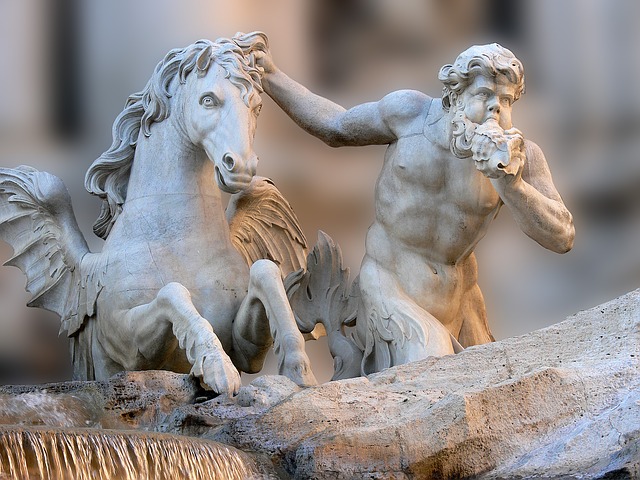
Why Toss The Coin Into The Trevis Fountain?
- The first dollar serves as a pledger to return to the homeland in Rome, which has the meaning of symbolic reflection that I will come back here decidedly.
- The second coin represents an ideal of Romance that is the carrier of romantic airs surrounding Rome.
- The third coin is cast with a desire for marriage, even more, entangling visitors’ privy purposes to the spell of the Eternal Rome
In addition, the origin story of the fountain is related with Rome’s ancient customs. The Trevi stems from an antique tradition of building monumental fountains at the threshold of aqueducts, a practice that can be connected to Roman times.
Why is The Trevi Fountain called the Fountain of Love?
The legend also connects the Trevi Fountain with the “Fountain of Love” because if you throw a coin over your left shoulder into it using your right hand, you ensure your return to Rome and find love. It is a common practice among tourists.
The fountain in films
The Trevi Fountain is quite famous in films too. “Three Coins in the Fountain” is one of the movies in which the fountain is pictured. The film’s main title song “Three Coins in the Fountain”, sung by Frank Sinatra, went on to become extremely popular. Other movies that featured the Trevi Fountain are “Roman Holiday”, “The Lizzie Mcguire Movie”, and “La Dolce Vita”, starring Anita Ekberg & Marcello Mastroianni. In 1996, the fountain was draped in black crepe to honor the Italian actor Marcello Mastroianni after his death.
Something more
Explore the underground through the entrance on the side street not far from the Trevi. See the sources of water that flow through to the fountain and the ruins of a Roman house. Appreciate the multilayered levels in which Rome is built. You may need the help of a guide for this.
Tips that you must know for visiting Trevi Fountain in Rome
- It is best to visit in the early hours of the day. There are fewer people around and there is no unnecessary crowding. Also, this makes for a very good photo opportunity. All photographers can capture the fountain at its best here. The weather is also pleasant enough most of the time. However, it also depends on the season. So, you should check the weather forecast accordingly wear appropriate clothing, and take the right things with you.
- Get amazed by the Trevi fountain at night. While the fountain looks quite beautiful during the day, the reflection of the colorful lights on the water of the fountain is enchanting. The entire landscape is different and you can capture an even more unique aesthetic at night.
- Participate in the tradition of tossing a coin into the fountain. As mentioned above, the Trevi fountain has an associated legend of granting wishes if you throw a coin into the water. These coins are later collected and used to help out the poor people and given to charity.
- Beware of pickpocketers while on your trip here. Keep your baggage safe with you at all costs. Avoid keeping your wallet in your back pockets to avoid theft.
- Dress appropriately. Rome majorly has cobbled streets. So, it is advisable to not wear uncomfortable footwear like heels or high-heeled shoes. Comfortable sneakers are best. Also, during the early morning and evening, it might get a bit cold. So, you must wear a light jacket or something like that.
- Some norms need to be followed when you visit the Trevi fountain or any other fountain in Rome. It is prohibited to bathe, dip, or enter the Trevi Fountain, or any fountain in Rome. Visitors are also not allowed to sit on the edge of the basin. It is illegal to steal coins that have been tossed into the fountain.
- The surroundings of the Trevi are rich in many priceless treasures. You will have great fun exploring the beautiful cafes, walking on historical streets and shopping in old-fashioned shops.
For many people, Trevi is a must-visit place that helps to recharge their internal batteries. Let the sound of the water flowing through the fountain calm you and fill you with peace. It is also one of the places that can be visited for free. Just sit there, enjoy the beautiful scenery and sculptures, or chill out with your friends and family. Create memories and unforgettable photographs here. The many eateries around the fountain ensure you don’t go hungry as you sit and gaze at the most beautiful fountain in the world.
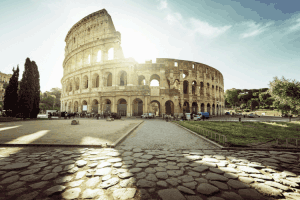
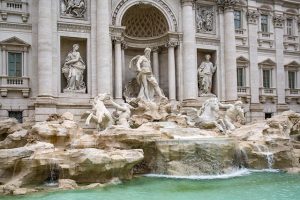
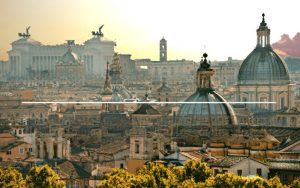


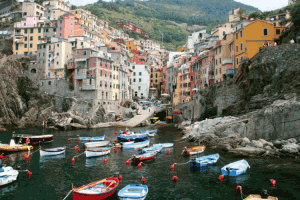

Excellent post. I absolutely appreciate this website. Keep it up!